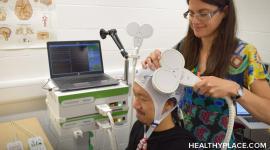What Is Deep Brain Stimulation? Benefits, Cost, Risks

Deep brain stimulation (DBS) is a surgical procedure that uses electricity to treat brain disorders such as Parkinson’s disease. It has been used with much-reported success in Parkinson's patients and is now being trialed to treat everything from depression to disabilities caused by stroke. Many people with symptoms such as tremor and cognitive impairment are attracted to the benefits of deep brain stimulation but are nervous about the risks and costs associated with surgery. Let's explore the pros and cons of deep brain stimulation as well as who is eligible.
What Is Deep Brain Stimulation?
Deep brain stimulation is a type of brain surgery commonly used to treat symptoms of Parkinson's disease. The procedure uses electric currents to target abnormal brain activity. These currents then trigger chemical reactions that lead to a release of neurotransmitters.
To be eligible for deep brain stimulation, you must be diagnosed with Parkinson's disease or another related brain disorder. In some cases, candidates with OCD (obsessive compulsive disorder) or Tourette’s may also be considered. Your doctor will assess your symptoms and level of disability, as well as your response to other forms of treatment. There are no standardized eligibility criteria for deep brain stimulation surgery.
Depending on your reason for treatment, you may need to undergo a psychiatric evaluation, movement assessment and speech or swallowing tests, as well as a full neuropsychological evaluation. This is all done to ensure that DBS is the best course of treatment for you.
What Does Deep Brain Stimulation Cost?
The cost of deep brain stimulation varies depending on where you live. In the United States, the cost of surgery (including the implanted device, hospital fees and anesthesia) can range from $35,000 to $100,000. Because it has been approved by the FDA, private insurance policies and Medicare will cover some or all of the treatment costs for those who are eligible.
What Does Deep Brain Stimulation Surgery Involve?
If you are eligible for deep brain stimulation surgery, doctors will use MRI and CT scans to map your brain. They will then surgically implant electrodes into targeted areas of your brain using a thin probe called a lead. The lead is then attached to a wire that runs through your head, neck and shoulders under the skin, where it connects to a generator in the chest.
When you have woken up from your deep brain stimulation surgery, your doctors will turn on the generator, and electrical impulses will send currents to the brain. Your doctor will then test your reactions by asking you to move limbs or perform basic tasks and functions.
After the procedure, you will need to visit a neurologist to examine the results of your surgery. Deep brain stimulation is an ongoing treatment, so doctors will need to test and tweak the electrical pulses and other settings to meet your individual needs. Continuous stimulation is sent through these electrodes to block the signals that cause physical symptoms. The aim of this surgery for patients with Parkinson's is to help them regain control over their movement.
Deep Brain Stimulation: Benefits and Risks
The benefits of deep brain stimulation include:
- Results can be tailored to your specific needs
- Surgery targets symptoms on both sides of the body
- The effects of surgery are (mostly) reversible
- Stimulation can be reduced or adjusted to minimize side-effects
- Once implanted, the device provides continuous symptom control, unlike medication
Despite brain stimulation benefits, the procedure also carries certain risks. These include:
- A small risk of brain hemorrhage (2-3%)
- Risk of paralysis, stroke and speech impairment if brain hemorrhage occurs
- Slight risk of cerebrospinal fluid leakage, which can lead to meningitis
- 15% risk of infection after electrodes are implanted
Side-effects of deep brain stimulation surgery also include:
- Swelling or tingling at the site of implantation, or in the face and lips
- Slight paralysis
- Problems with speech of vision
- Dizziness, loss of balance
- Confusion and reduced concentration
- Allergic reaction to the implant
- Coordination problems
Your doctor will help you assess the pros and cons of DBS to treat your specific condition. If you want to know more about deep brain stimulation, you should talk to your doctor to find out if you are eligible. He or she can then refer to you to a neurologist for further testing to assess whether deep brain stimulation is right for you.
APA Reference
Smith, E.
(2019, August 19). What Is Deep Brain Stimulation? Benefits, Cost, Risks, HealthyPlace. Retrieved
on 2026, January 14 from https://www.healthyplace.com/other-info/mental-illness-overview/what-is-deep-brain-stimulation-benefits-cost-risks



